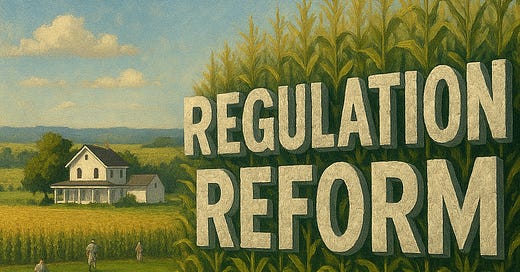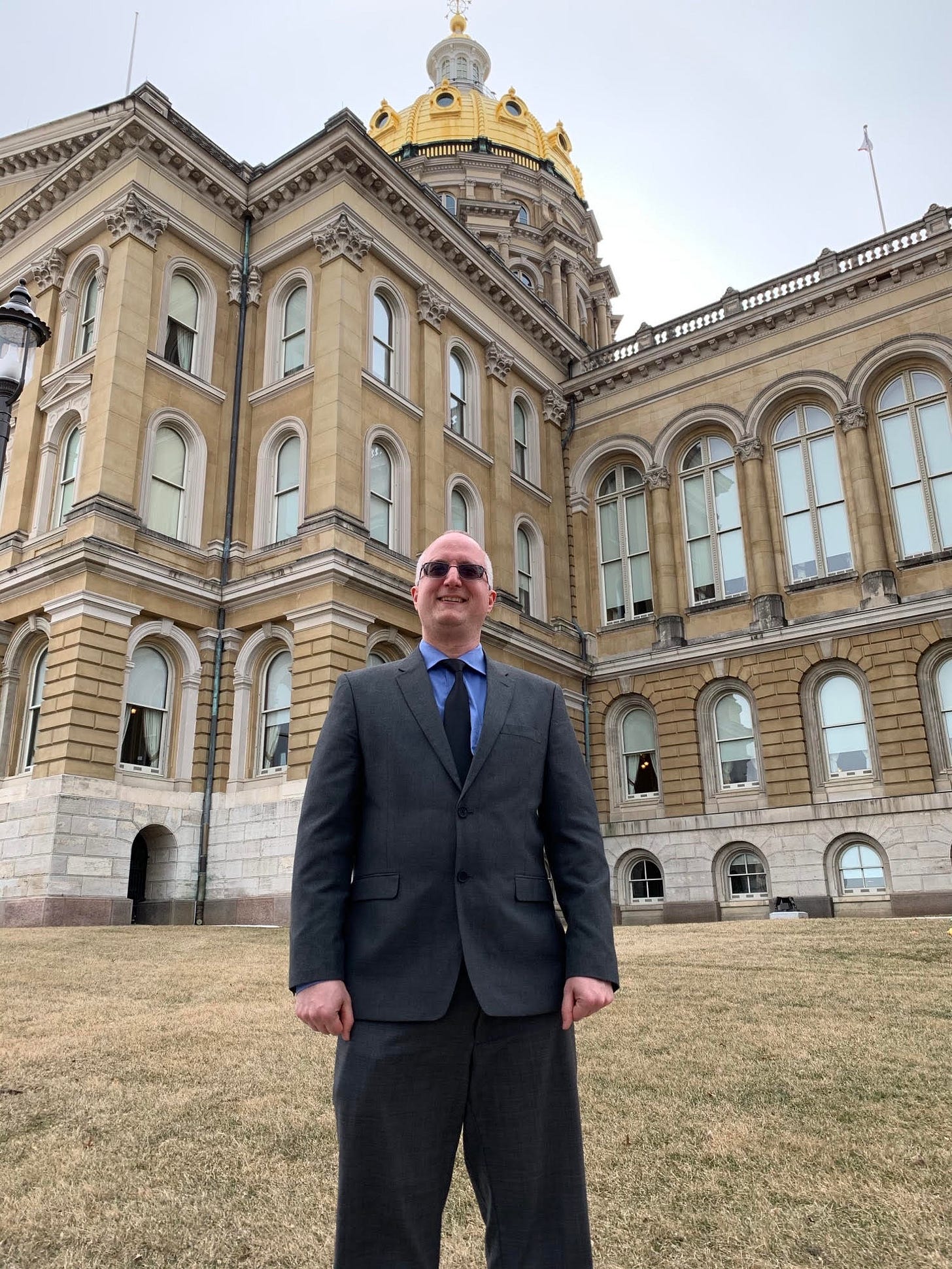Image created with ChatGPT.
Early in 2020, I had the great pleasure of traveling to Des Moines, Iowa to speak with legislators about occupational licensing reform. It was great to have the opportunity to meet with legislators and I was glad I squeezed it in before COVID-craziness locked us all down. Here is a great photo Tyler Raygor was kind enough to take— he was instrumental in helping me meet with folks at the Capitol. Big shout out to Ben Wilterdink as well for making this trip and connection happen!
Photo taken on February 25, 2020 in Des Moines, Iowa.
Working with my frequent collaborator Conor Norris, we had recently published a short Iowa-focused piece for the Archbridge Institute. In the report, we highlighted the high fraction of workers with licenses in the state (24%) as well as the large number of new low-income occupations (42) that added licensing requirements from 1993 to 2012.
Five years ago, from an occupational licensing and regulatory standpoint, Iowa had a lot of room for reform. Perhaps nothing was more telling than the state’s absurd licensing requirements for barbers and cosmetologists— requiring both professionals to complete 2,100 hours of education before being eligible to legally work.
Let’s catalogue the reforms we have seen since the beginning of 2020 in the Hawkeye State:
Universal recognition
Following the great example of Arizona the previous year, Iowa enacted universal recognition in 2020. Iowa’s bill took Arizona’s reform one step further, however. The bill provided a pathway for unlicensed workers to begin working in the state if they had a minimum level of experience. This applies to occupations that Iowa licenses, but other states may not require licensing. At the time, this was a brand new wrinkle in the reform and offered a unique pathway for workers to begin working in the state. Since then, several states have followed Iowa’s lead on this new pathway.
Iowa also improved upon Arizona’s model by removing residency requirements for applicants two years later. This is particularly helpful for workers living near the border who wish to work and practice in Iowa, but are not interested in moving to the state.
Comprehensive board and commission reform
Prior to the reform commencing, Iowa had more than 250 boards and commissions in the state. Governor Reynolds made clear that she was prioritizing government streamlining in her administration. The first major step in this reform was the legislature passing SF514 in 2023. The bill created a new Boards & Commissions Review Committee. The Committee was tasked with reviewing each of the boards and commissions in the state and making recommendations about potential elimination or consolidation.
In January of 2024, the Committee released a report making recommendations. The report was quite bold and forward thinking and recommended the elimination of 111 of the state’s 256 boards and commissions. I had the great pleasure of testifying at the public hearing for the report— attempting to balance many of the voices claiming that the reform would make the sky fall.
In 2024, Governor Reynolds signed SF2385 that moved forward with most of the committee’s recommendations— eliminating more than 80 of the state’s boards and commissions. This reform established Iowa as a national leader in streamlining government. The careful approach of reviewing the state’s boards and commissions and allowing the legislature to implement reform provides a blueprint for other states to follow in streamlining government.
Taming hair industry regulations
As noted earlier, Iowa long held the dubious distinction of having some of the most onerous education requirements for barber and cosmetology licensing in the country. A small change on the margin took place in 2023 when the state enacted HF652. The law reduced education requirements for both professions to 1,550 hours and also provided an substantially less cumbersome pathway for salons and workers offering solely blow drying services.
In 2025, Iowa lawmakers went even further by providing a pathway for unlicensed barbers and cosmetologists to provide services for pay so long as they were working for another licensed barber or cosmetologist. HF711 provides this pathway. The workers may choose to pursue a barber and cosmetology license in the state after completing 2,000 hours of supervised work and passing the state’s licensing exam. Or, the workers may simply continue working under a licensed cosmetologist or barber permanently.
Ideally, I hope to see a day where barbers and cosmetologists can work more freely without overly burdensome licensing. But this historic reform for Iowa is a step in the right direction and an incredible flip for a state that just two years ago had some of the most burdensome licensing requirements in the country.
Each of the three reforms above represent how far Iowa has come in a five year timespan. In many respects Iowa has been flying under the radar, but they deserve more attention for what they have accomplished. Policy groups in the state also deserve credit for their tireless efforts in moving forward with these groundbreaking reforms. I’d enjoy seeing my home state of West Virginia, as well as many other states nationally, emulate Iowa and move forward with the reforms pioneered by policymakers in Des Moines.





